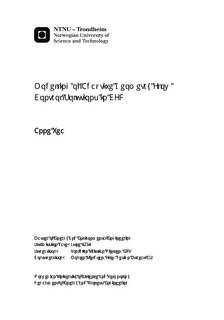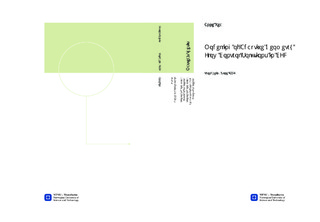| dc.contributor.advisor | Nielsen, Torbjørn Kristian | nb_NO |
| dc.contributor.advisor | Kjeldsen, Morten | nb_NO |
| dc.contributor.author | Vea, Anne | nb_NO |
| dc.date.accessioned | 2014-12-19T11:49:44Z | |
| dc.date.available | 2014-12-19T11:49:44Z | |
| dc.date.created | 2012-11-10 | nb_NO |
| dc.date.issued | 2012 | nb_NO |
| dc.identifier | 566969 | nb_NO |
| dc.identifier | ntnudaim:8274 | nb_NO |
| dc.identifier.uri | http://hdl.handle.net/11250/234934 | |
| dc.description.abstract | A synthetic jet is a flow control device which injects a pulsating jet flow of high-momentum fluid into a boundary layer near the wall confining a main flow. The technique is used to prevent or delay boundary layer separation. While the method is well reported for gas flows, less knowledge is available for liquid flows. It has been suggested that synthetic jets might be used in hydro turbines in order to stabilise draft tube flow. When accelerating a liquid flow, the energy consumption required will not only depend on the system mass, but also on the added mass due to acceleration of the liquid. The purpose of this thesis has been to study the physics of a synthetic jet where water is the working fluid, drawing special attention to added mass. CFD simulations have been conducted, where the synthetic jet was modelled using a dynamic grid. Results for added mass and frequency response of the system from CFD analysis have been compared to an analytic solution. CFD simulations seem to have captured a number of interesting effects not predicted from the analytic solution; the most prominent being frequency regions of lower added mass than analytically predicted. The apparent resonance regions are believed to occur due to interaction between the excitation frequency of the synthetic jet, and frequencies of dynamics in the system - examples are pressure pulsations from vortex shedding frequencies, or from frequencies originating from the effect of flow across a cavity. Furthermore, it has been demonstrated that operating the system at resonance will reduce the power requirements of the driving force, and that a variable stiffness spring should be part of the actuation system to allow for tuning of the resonance frequency. | nb_NO |
| dc.language | eng | nb_NO |
| dc.publisher | Institutt for energi- og prosessteknikk | nb_NO |
| dc.subject | ntnudaim:8274 | no_NO |
| dc.subject | MTENERG energi og miljø | no_NO |
| dc.subject | Varme- og energiprosesser | no_NO |
| dc.title | Modelling of Adaptive Geometry Flow Control Solutions in CFD | nb_NO |
| dc.type | Master thesis | nb_NO |
| dc.source.pagenumber | 89 | nb_NO |
| dc.contributor.department | Norges teknisk-naturvitenskapelige universitet, Fakultet for ingeniørvitenskap og teknologi, Institutt for energi- og prosessteknikk | nb_NO |

